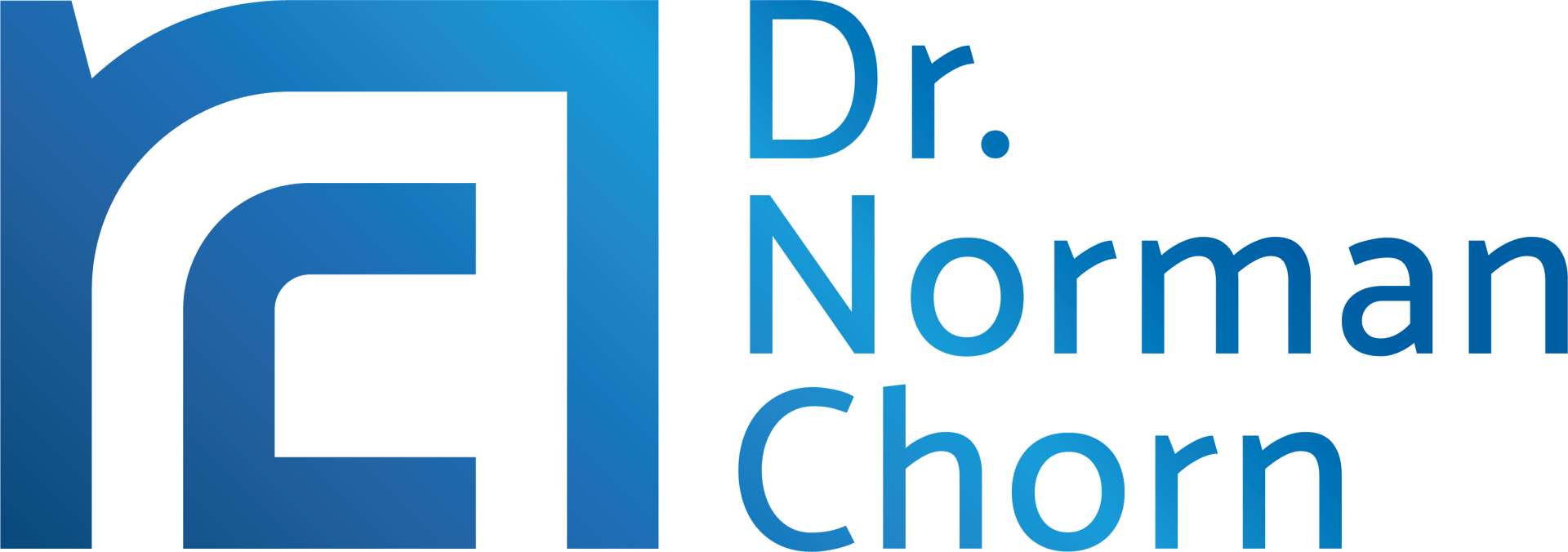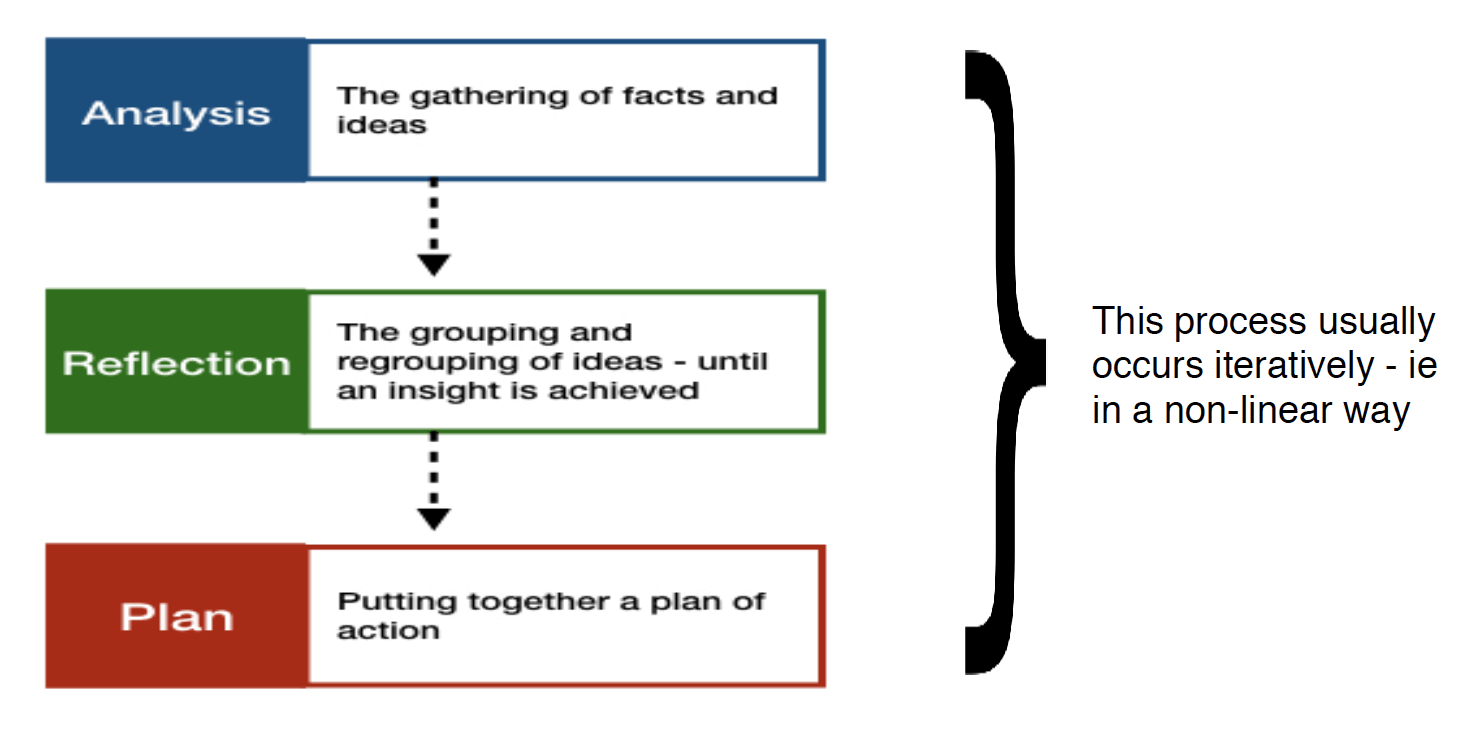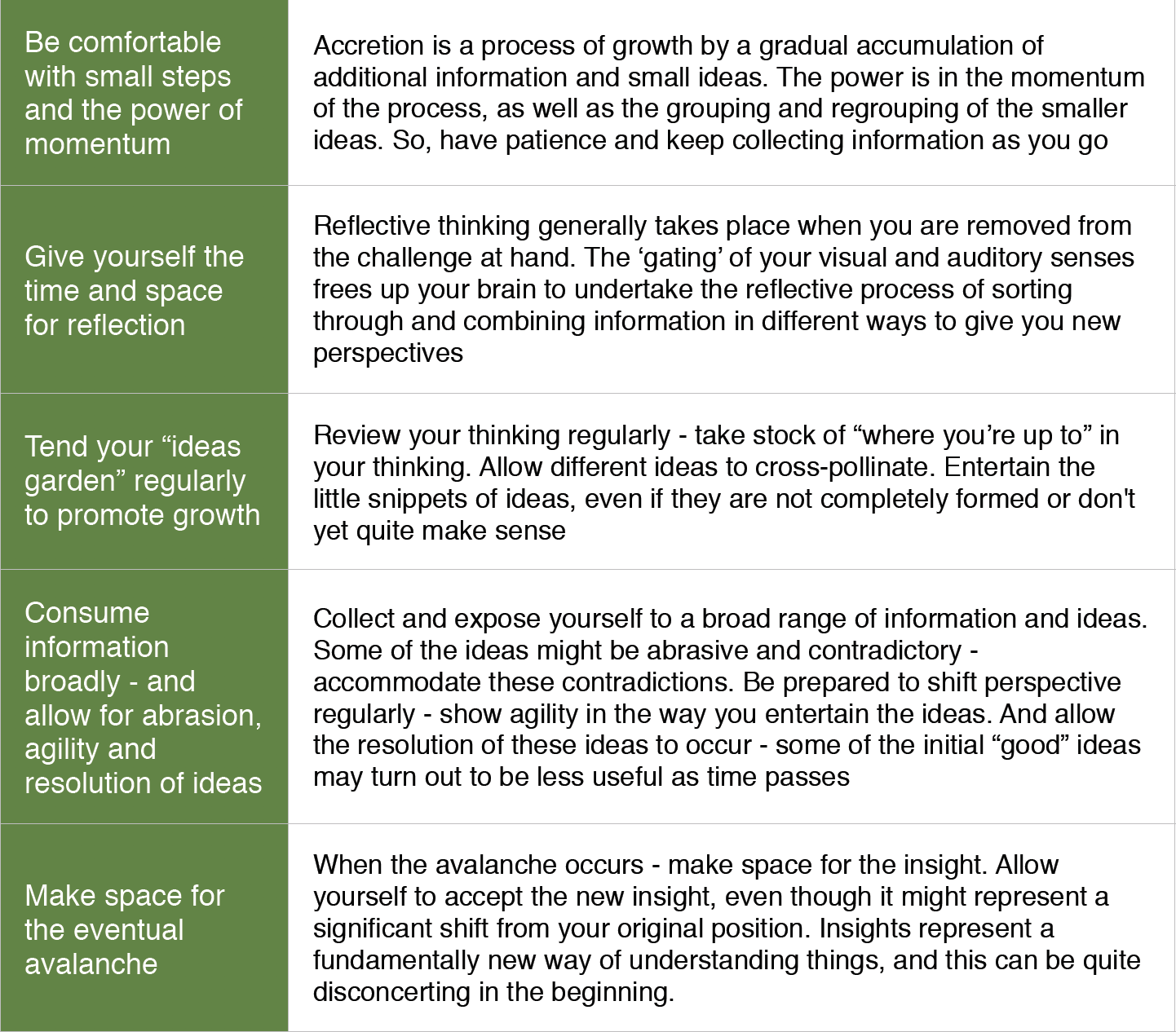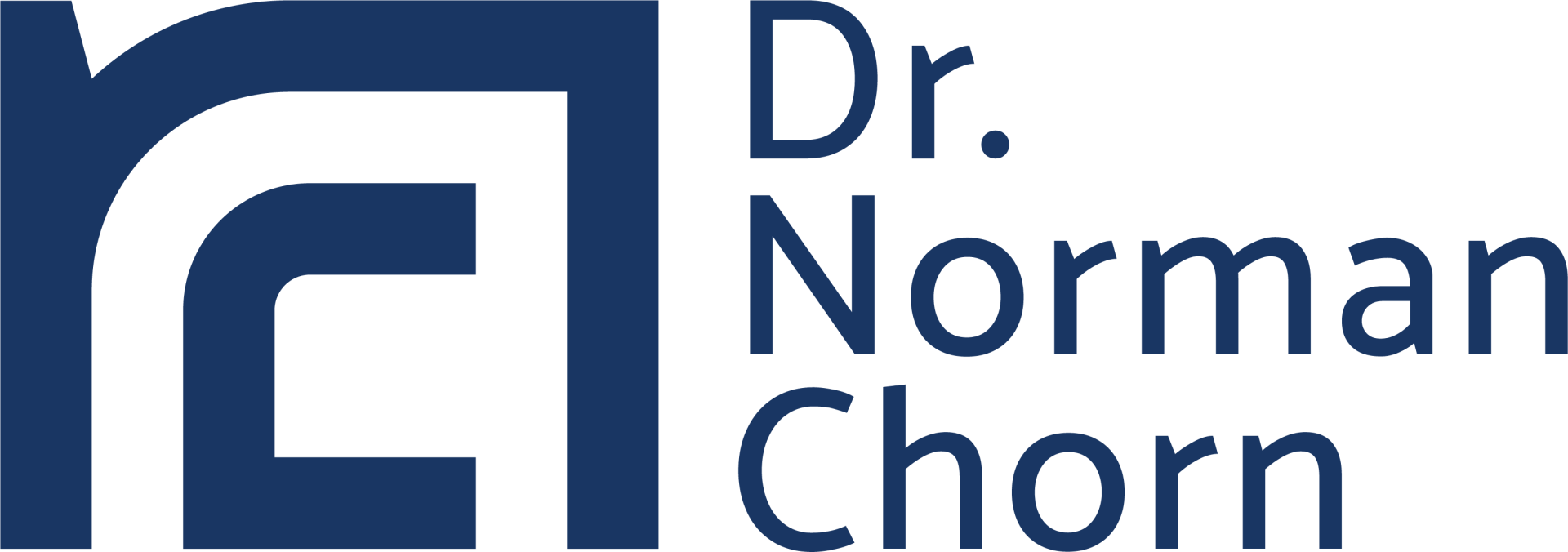Accretion?
Accretion is defined as ‘growth by a gradual accumulation of additional layers' (1). It has its origins in astronomy, where it is used to describe the formation of stellar systems. The gravity of a heavy molecule attracts smaller molecules to it, and the smaller molecules stick to the heavier one.
As the heavier molecule becomes even heavier, it attracts smaller objects to it. And so the process continues until you have a large object in space with significant gravitational pull. I like this analogy because it can explain how strategic insights are achieved by a series of smaller ideas - and how a change in thinking takes place.
How does this happen? There are two key stages in accretion:
1. As you begin considering a problem or challenge, you gather pieces of information and a series of ideas
2. As these ideas accumulate, the smaller ones stick to the larger ones until a ‘tipping point’ is reached. This causes an eventual avalanche that changes the whole landscape.
In other words, accretion explains how a series of small ideas or steps can eventually cause a significant upheaval in the status quo - an avalanche that creates a new insight or breakthrough in your thinking process.
This can sometimes be experienced as a ‘eureka’ moment - and has significant implications for the development of strategic insights.
How Does Accretion Help Strategic Thinking?
Strategic thinking may be understood in three distinct phases:
This may appear to be a linear, sequential process - but this is not the case. Our brain - a key tool in strategic thinking - is best described as a complex adaptive system.
As a complex system, it learns and makes connections in an unpredictable, non-linear way. As we gather information and ideas about a situation, these ideas are put into the “ideas garden” of our brain. The larger ideas - having more gravitational pull - attract the smaller ideas and they stick together to form an even larger idea.
These idea fragments float around grouping and regrouping, until some order begins to emerge in the constellation of ideas in our “ideas garden”. This is the first stage of the accretion process.
The second phase is best explained by the sandpile effect identified by Per Bak, a Danish scientist (3). He observed that if you piled sand, grain by grain, until it made a cone (a pyramid-like shape), you CANNOT predict when that cone will have an avalanche and collapse!
Furthermore, he observed that the sand cones, which look relatively stable, are in fact deeply unpredictable. There is no way of knowing what will happen next. This unpredictability is an important characteristic of complex adaptive systems, and describes the way our brain functions in these situations.
The sandpile effect suggests that we cannot predict when the collection of ideas in our “ideas garden” will generate an avalanche - i.e. the insight that changes the way we see and think about a situation.
Instead, we know that the process of solving complex problems reflects the tendency of complex systems to be constantly poised on the edge on unpredictable change. Bak argues that this is one of the fundamental forces of nature. So, if we cannot predict when and how a new insight will emerge - what can we do to encourage the process?
How To Encourage Accretion And Strategic Insight
There are five things we can do to promote the development of strategic insight through accretion (4):
I’d like to acknowledge the work of Executive Coach, Erik Kruger (erikkruger.com), who started me thinking about Accretion.
References
(1) I was introduced to the notion of accretion by Erik Kruger, a talented writer who encourages the concept of accretion as a means of improving personal performance. I find his thinking to be insightful and helpful. See his blogs at https://bettermanblueprint.com
(2) How creative accretion leads to epiphanies, C Gilkey, Productive Flourishing, April 2014
(3) Self organised criticality, P Bak and K Chen, Scientific American 264, 1991
(4) The two dynamics of change, C Gilkey, Productive Flourishing, October 2010
About the Author
Dr Norman Chorn is a highly experienced business strategist helping organisations and individuals be resilient and adaptive for an uncertain future. Well known to many as the ‘business doctor’!
By integrating the principles of neuroscience with strategy and economics Norman achieves innovative approaches to achieve peak performance within organisations. He specialises in creating strategy for the rapidly changing and uncertain future and can help you and your organisation.
Subscribe to our regular articles, insights and thought leadership






